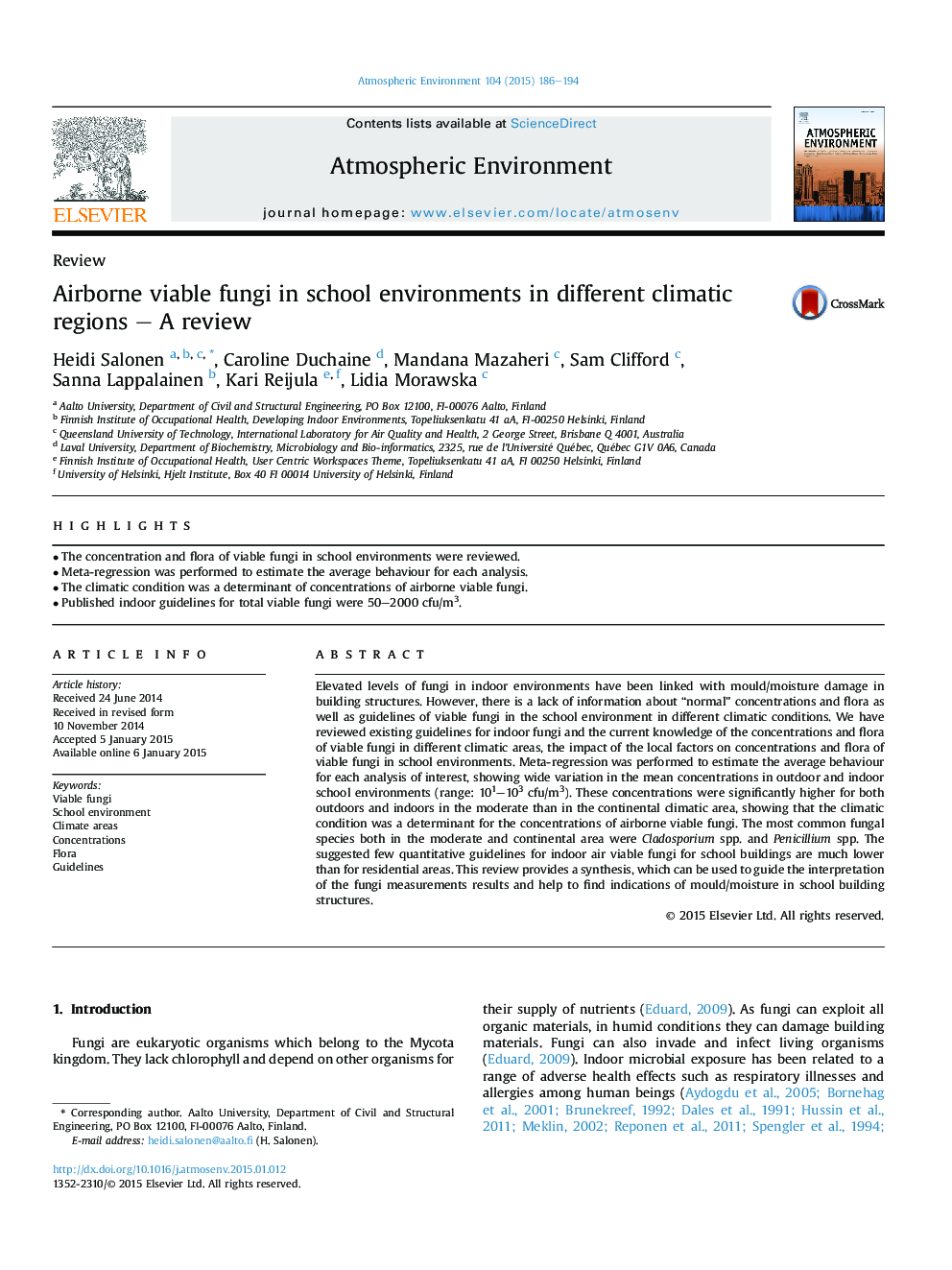| Article ID | Journal | Published Year | Pages | File Type |
|---|---|---|---|---|
| 6338765 | Atmospheric Environment | 2015 | 9 Pages |
Abstract
Elevated levels of fungi in indoor environments have been linked with mould/moisture damage in building structures. However, there is a lack of information about “normal” concentrations and flora as well as guidelines of viable fungi in the school environment in different climatic conditions. We have reviewed existing guidelines for indoor fungi and the current knowledge of the concentrations and flora of viable fungi in different climatic areas, the impact of the local factors on concentrations and flora of viable fungi in school environments. Meta-regression was performed to estimate the average behaviour for each analysis of interest, showing wide variation in the mean concentrations in outdoor and indoor school environments (range: 101-103Â cfu/m3). These concentrations were significantly higher for both outdoors and indoors in the moderate than in the continental climatic area, showing that the climatic condition was a determinant for the concentrations of airborne viable fungi. The most common fungal species both in the moderate and continental area were Cladosporium spp. and Penicillium spp. The suggested few quantitative guidelines for indoor air viable fungi for school buildings are much lower than for residential areas. This review provides a synthesis, which can be used to guide the interpretation of the fungi measurements results and help to find indications of mould/moisture in school building structures.
Related Topics
Physical Sciences and Engineering
Earth and Planetary Sciences
Atmospheric Science
Authors
Heidi Salonen, Caroline Duchaine, Mandana Mazaheri, Sam Clifford, Sanna Lappalainen, Kari Reijula, Lidia Morawska,
